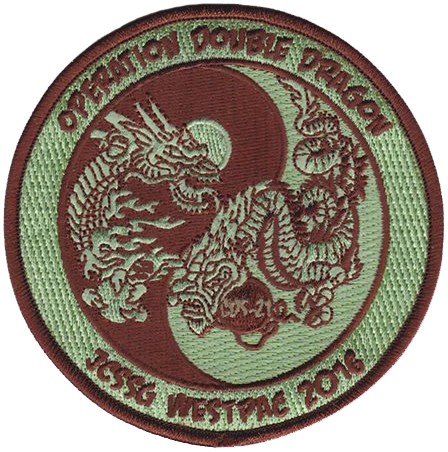Description
Computer made/mounted on velcro 4.0 inch-100mm
DESTROYER SQUADRON 21 (COMDESRON-21)
Organized March 1, 1943 as a squadron, the officers and crew rapidly developed an ‘sprit de corps’ knowing that they had been and were going to continue leading the new 2100-ton Fletcher class destroyers into surface engagements. In October 1943, the squadron was ordered north to the Central Pacific to join the fast carrier task forces in the Gilbert and Marshall Islands campaigns with a future leading role in the victorious entrance into Tokyo Bay for the Japanese surrender.
Through these years at war, the ships of Squadron Twenty-One left a “legacy of courage and fighting skill.” This inspiration combined with a description of the formation and early World War II history of the squadron resulted in the present squadron insignia: a Rampant Lion with a trident, sweeping the seas beneath the Southern Cross and the motto “Solomons Onward.”
History:
Destroyer Squadron Twenty-One’s proud history began in March, 1943, when the first ships of the then-new Fletcher class, having been deployed to Guadalcanal in the southwestern Pacific’s Solomon Islands, were organized as Destroyer Squadron Twenty One, part of Admrial William F. Halsey’s Third Fleet.
Over the next three years, Fletcher, Radford, Jenkins, La Vallette, Nicholas (flagship), O’Bannon, Chevalier, Strong, Taylor, Ross and Hopewell served in the front line and collectively earned three Presidential Unit Citations, a Navy Unit Commendation and 118 battle stars.
A great strength was the intensity and dedication of their crews. “Each old sailor cherishes his own private inner shrine that is filled with the memories of those great old guys he knew so long ago,” wrote Al Grimes of the Strong. “They did what was needed when it was needed, regardless of the hours and risk – and it was no big deal. Each of us knew many like this; they were everywhere.” While three ships (Radford, Nicholas and O’Bannon) were awarded individual Presidential Unit Citations and one ( Taylor ) a Navy Unit Commendation, all their crews were deserving and all could take pride in their collective accomplishments. They were pioneers.
Following World War II, on December 31, 1945, the original Destroyer Squadron Twenty-One was inactivated with the last of its ships. But in January 1946, a fleet reorganization took place and the squadron came alive again for about a year. For the next eight years, the Rampant Lions were not in the Fleet as Destroyer Squadron Twenty One.
Then on December 9, 1954, Destroyer Squadron Eighteen arrived from the East Coast, was redesignated Destroyer Squadron Twenty-One, and commenced with significant roles in Pacific Fleet operations, including the evacuation of the Tachan Islands. From 1965 until the 1973 cease-fire, the squadron participated in the Vietnam War in a number of roles including naval gunfire support, escort duty for carrier strike groups, search and rescue, radar surveillance, and coastal patrol. Between 1973 and 1986, Destroyer Squadron Twenty-One made numerous deployments to the Western Pacific and participated in Eastern Pacific exercises while assisting ships in achieving and maintaining high states of training and material readiness.
The squadron deployed in 1986 as part of the USS NEW JERSEY Battle Group, the Navy’s first Tomahawk cruise missile-equipped battle group. In 1989, the Squadron deployed to the Western Pacific and Indian Oceans with the USS Enterprise Battle Group. The Squadron next deployed in 1991 to the Arabian Gulf with the USS NIMITZ Battle Group in support of Operation Desert Storm. The Squadron returned to the Arabian Gulf during the USS Abraham Lincoln Battle Group’s deployments in 1993, 1995, and 1998. Recently, the Rampant Lions of Destroyer Squadron Twenty-One deployed as the “Sea Combat Commander” with the first battle group of the new millennium, the USS John C. Stennis Battle Group. During the deployment, the squadron interdicted and diverted eighteen United Nations sanction violators carrying over 133,000 metric tons of illegal oil, a success unsurpassed since the beginning of enforcement of sanctions against Iraq.
Today, the Squadron is continuously active with the John C. Stennis Strike Group. The Rampant Lions of Destroyer Squadron Twenty-One are proud of their heritage and of their vital, current, and future roles in support of our nation’s worldwide maritime interests and responsibilities.
